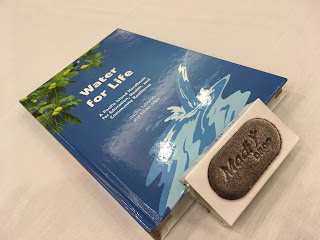When a climate-driven flood, storm, or fire roars into your community, nearly everyone is affected. Pre-planning a response helps anyone or anything survive, recover from, and then thrive after the event. That's called resilience.
With so much more risk and damage around us, everyone will have to help, not just the first-responders, the waste haulers, and the construction crews.
Last week I attended the Pacific Risk Management 'Ohana (family/group) known as PRiMO to find connections among cultural institutions sector and the risk and disaster management sector. There is so much room for zoos, aquariums, museums of all kinds to work with our communities to help manage the increasingly frequent crises. I didn't find much happening, yet, but I did find terrific willingness among NOAA scientists, emergency communications specialists, community managers, and product developers to work with the cultural sector. They don't like disasters any more than we do! They too want to help the public understand the science of climate change, plan better for themselves, and make changes that will reduce risk and increase resilience.
So, if you had to deal with a present or future natural disaster in your community, what would your museum, zoo, garden or historic site do to help? If your community were in recovery mode, what could you do?
Short term: Could
- your site be an accessible gathering spaces for preparation planning and staging, for professionals to host at-risk populations, and to provide services or staging during recovery?
- you allow your empty parking lots be the staging site for power company equipment or emergency communication vehicles?
Post-disaster: Could
- your staff collect stories and oral histories from the community, then plan to share the stories of resilience and recovery in your community while memorializing losses and achievements?
- your collections provide the information for restoring what has been lost?
- your zoo and aquarium plan to care for a certain number of injured animals, and plan to relocate others suitably?
 |
| NOAA has a great resource Digital Coast with instructions to 3-D print your own coral polyp modules You can made them sensitive to a warming ocean and watch them bleach! |
Long term: Could
- your aquarium be part of the process of educating people to protect coral reefs while rebuilding a living, resilient coral reef to protect your shores against rising seas and storm surges?
- your historical records help explore potential impacts and better solutions for the future?
- you educate the public about the science of safe drinking water and how to protect themselves after an event...maybe explain how MadiDrops work...
https://www.madidrop.com/how-it-works/
There's no limit the the relevant topics your museum, garden, aquarium, zoo or historic site can interpret. And there is so much your physical plant can provide to support the resilience effort.
Please join the disaster planning conversations in your community. Help each other!

No comments:
Post a Comment